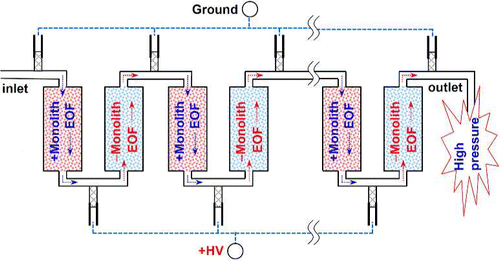New micropumps for hand-held medical labs produce pressures 500 times higher than car tire

In an advance toward analyzing blood and urine instantly at a patient's bedside instead of waiting for results from a central laboratory, scientists are reporting development of a new micropump capable of producing pressures almost 500 times higher than the pressure in a car tire. Described in ACS' journal Analytical Chemistry, the pumps are for futuristic "labs-on-a-chip," which reduce entire laboratories to the size of a postage stamp.
Shaorong Liu and colleagues explain that powerful pumps are critical for high performance liquid chromatography (HPLC), a mainstay laboratory testing technology used in medical diagnosis, drug screening and numerous other purposes. HPLC can analyze 80 percent of all known chemical compounds. Scientists are trying to miniaturize HPLC for handheld devices, which would eliminate the need to send samples to central labs and wait for the results. One stumbling block, however, is the lack of suitable small, powerful pumps to push samples through HPLC devices.
They describe invention of a device six times more powerful than the best existing pump of this kind. Linked together in series, their electroosmotic pumps can produce more than 17,000 pounds per square inch of pressure. The pumps use electroosmotic flow, in which an electrical current makes charged particles flow through a narrow channel. The new pumps could produce even higher pressures, the scientists report.
More information: "Miniaturized Electroosmotic Pump Capable of Generating Pressures of More than 1200 Bar" Anal. Chem., Article ASAP. DOI: 10.1021/ac3025703
Abstract
The pressure output of a pump cannot be increased simply by connecting several of them in series. This barrier is eliminated with the micropump developed in this work. The pump is actually an assembly of a number of fundamental pump units connected in series. The maximum pressure output of this pump assembly is directly proportional to the number of serially connected pump units. Theoretically, one can always enhance the pressure output by adding more pump units in the assembly, but in reality the upper pressure is constrained by the microtees or microunions joining the pump components. With commercially available microtees and microunions, pressures of more than 1200 bar have been achieved. We have recently experimented using open capillaries to build this pump, but many capillaries have to be utilized in parallel to produce an adequate flow to drive HPLC separations. In this paper, we synthesize polymer monoliths inside 75 μm i.d. capillaries, use these monoliths to assemble miniaturized pumps, characterize the performance of these pumps, and employ these pumps for HPLC separations of intact proteins. By tuning the experimental parameters for monolith preparations, we obtain both negatively and positively charged submicrometer capillary channels conveniently. Each monolith in a 75 μm i.d. capillary is equivalent to several thousands of open capillaries.
Journal information: Analytical Chemistry
Provided by American Chemical Society

















